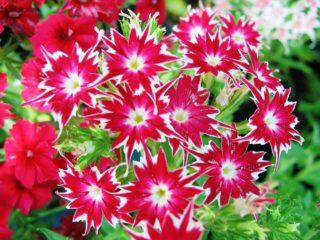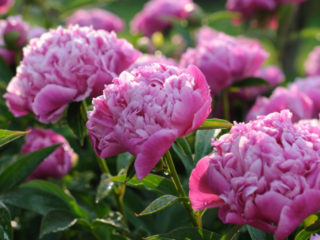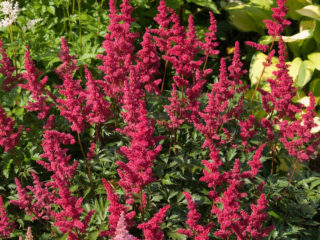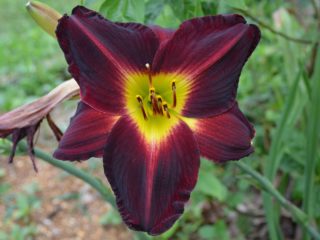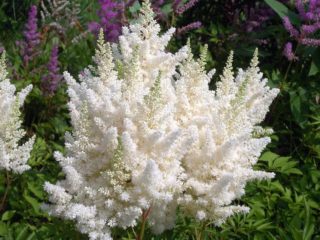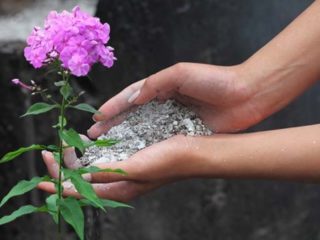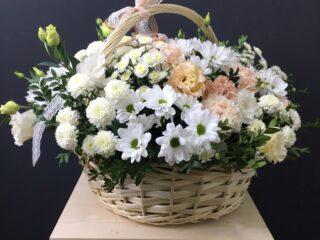Content
Yarrow looks different depending on the species. However, most varieties have similar traits.
What does a yarrow plant look like?
Yarrow (Achillea) is a perennial plant of the Asteraceae family with a developed rhizome and straight stems up to 90 cm in height. It has whole or pinnately dissected leaves, arranged on the shoot in an alternate order. In summer, the plant blooms with white, yellow, red or pink baskets consisting of tubular median and marginal flowers. Closer to autumn, the fruits ripen - flattened ovoid or oblong achenes.
The origin of the name yarrow is associated with Ancient Greece. The word achilleios, or “Achilles,” was the name given to a plant dedicated to the hero of the Trojan War, Achilles, the son of Peleus and Thetis.
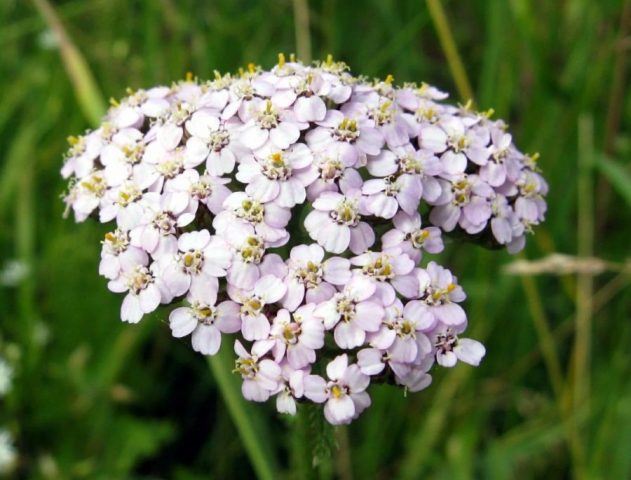
The diameter of yarrow inflorescences can be about 15 cm
In its natural form, yarrow is distributed throughout the world. You can see it in North America and Eurasia. In total there are about 150 varieties of culture.
What is another name for yarrow?
Yarrow can also be found under the name “cut” grass. The plant contains a large amount of valuable substances and is able to stop bleeding. Herbal remedies are used for wounds and cuts, which explains the second name.
Where does yarrow grow in Russia?
Varieties and types of plants are distributed throughout Central Russia. Yarrow grows in meadows and steppes, in parks and city gardens. You can see it on roadsides and vacant lots. The plant prefers well-lit, warm areas with nutritious but loose soil.
Types of yarrow
Photos and descriptions of decorative yarrow show that the perennial is represented by a large number of species. Several particularly common varieties can be named.
Ordinary
Description of the common yarrow (Achillea millefolium) is a tall perennial up to 80 cm above the ground with straight shoots. In summer, the species blooms into baskets up to 7 mm in diameter, collected in compact shields. Reed flowers can be white or reddish, tubular flowers have a yellow tint. The species looks attractive in the landscape and is also valued for its numerous medicinal properties.
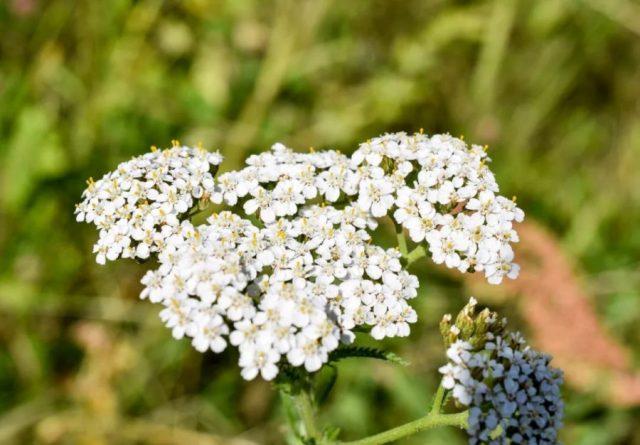
Common yarrow has been cultivated since the 15th century.
Ptarmika
Yarrow ptarmica (Achillea ptarmica) grows in central Russia and in European countries. It has a creeping rhizome and straight stems; the leaves of the species are small, whole, linear in shape.The baskets of the plant are pearly white, small, and form loose shields on the tops of the shoots.

Ptarmika grows on average up to 1 m above the ground
Meadowsweet
Photos and descriptions of the plant meadowsweet yarrow (Achillea filipendulina) indicate that in its natural form the variety is found only in Central Asia and the Caucasus. The perennial has feathery openwork leaves of a slightly grayish tint. It produces baskets of yellow-golden color, the scutes reach 13 cm in diameter.
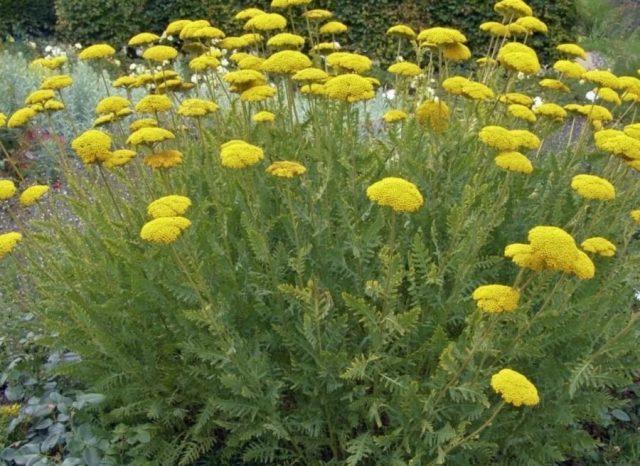
Meadowsweet yarrow stretches up to 1.2 m above the ground
Felt
Felt yarrow (Achillea tomentosa) grows only up to 15 cm. The species is used as a ground cover; the bushes can spread up to 45 cm wide. The leaves of the plant are silvery, pubescent, and with the onset of autumn they do not fall off, but only press tightly to the ground. The baskets of this species are lemon-yellow in color and form inflorescences up to 7 cm in diameter.
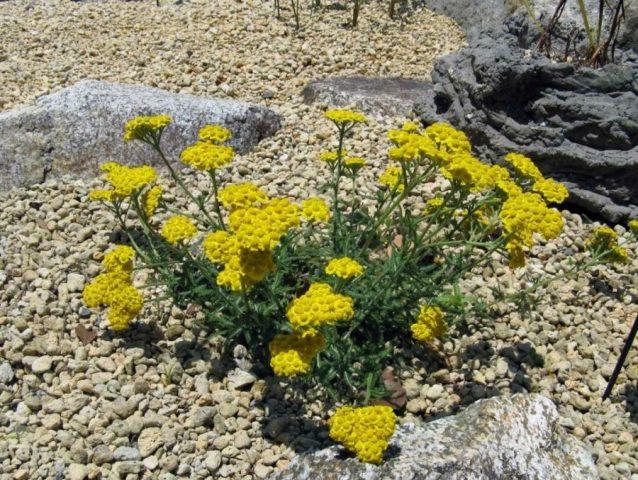
In its natural form, felt yarrow grows in southeastern Europe and Western Siberia
Noble
Noble cut grass (Achillea nobilis) settles on calcareous and rocky soils in the Ciscaucasia, in the southern regions of Russia and in Western Siberia. The stems of the species are simple or branched, grayish in the upper part. The baskets form dense complex shields. The core of the buds is yellow, and the reed petals are golden or snow-white.
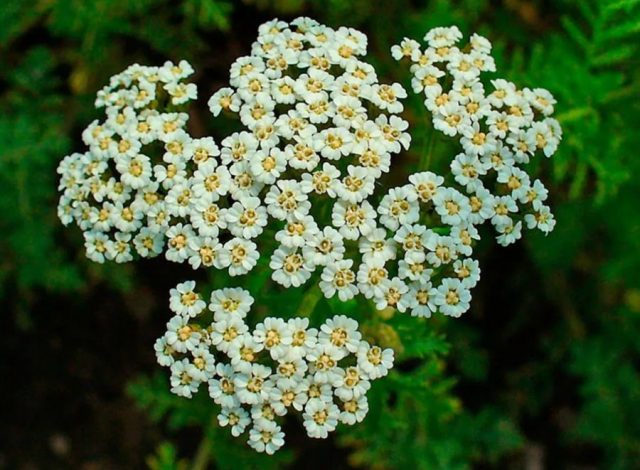
The noble appearance of yarrow reaches 65 cm above the ground
Umbrella
Umbrella yarrow (Achillea umbellata) is a miniature species native to Greece. With a diameter of about 20 cm, it rises above the ground to only 12 cm. The leaves of the plant are whitish due to pubescence, pinnately lobed, and the baskets are white.
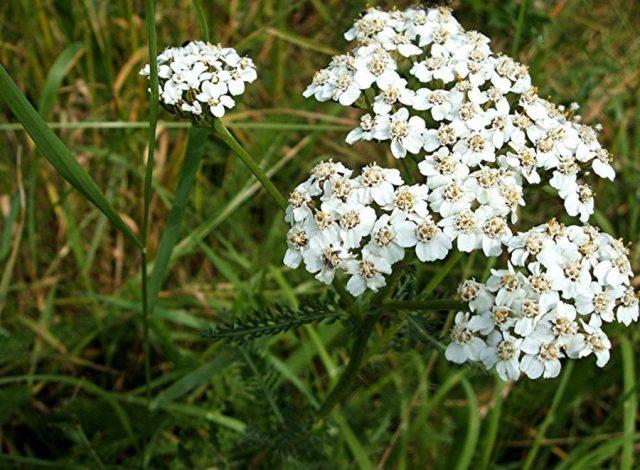
Flowering of umbrella cut grass begins in August and lasts about a month
Asiatic
Asian yarrow (Achillea asiatica) is a herbaceous perennial with shoots up to 60 cm above the ground. In the upper part the stems are highly branched. The leaf blades are strongly dissected and consist of widely spaced toothed segments. The flowers of the species are purple or pale pink, forming scutes on the tops of the shoots. The decorative period begins at the end of July or August.
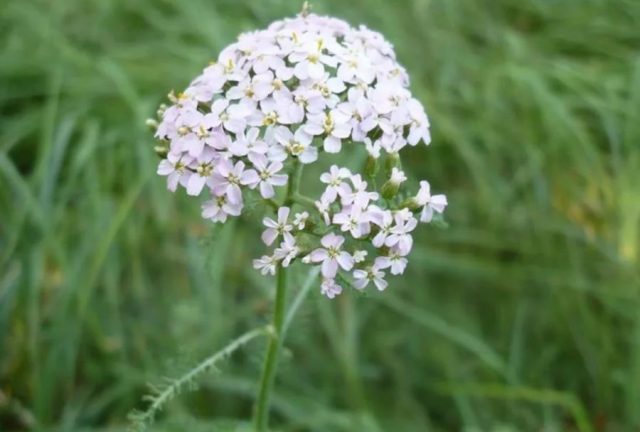
Asian yarrow can be found in the Amur region, Sakhalin and Kamchatka
Bristly
Bristle grass (Achillea setacea) is a perennial species with thin creeping roots and a few erect shoots. The plant is heavily pubescent, making the green leaves and stems appear bluish. The plates at the base of the bush are petiolate, and in the upper part they are sessile. Yarrow flowers are collected in traditional corymbs.
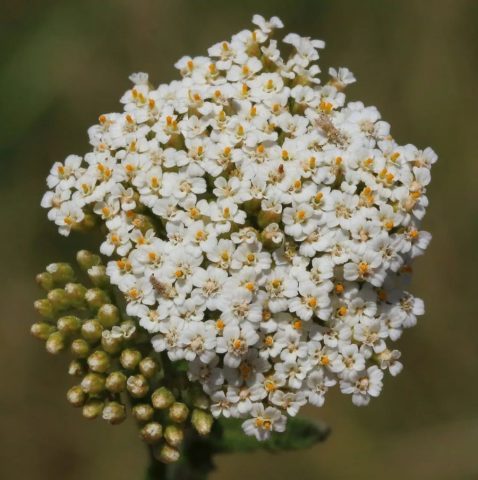
Bristle yarrow can be seen in Siberia, Altai, as well as in the Mediterranean and Iran
Gristly
Cartilaginous cut grass (Achillea salicifolia) is also called willow grass. The plant is tall, has lanceolate plates with a jagged edge. The species produces white, numerous baskets, blooming from June to September. From mid-summer to late autumn, the fruits of the plant ripen.
You can see gristly cut grass in Siberia and the Far East, as well as in the north-west of the European part of the country. Yarrow grows in forests, settles in damp areas near swamps and ponds, and is also found in bushes.
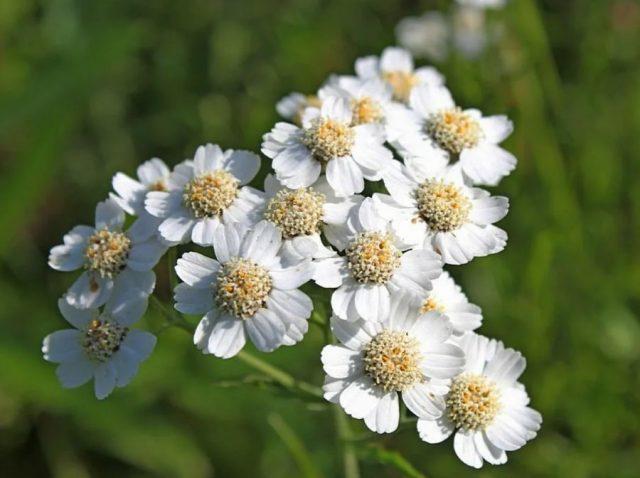
Cartilaginous cut grass grows on average up to 1 m
Arab
Arabian yarrow (Achillea arabica) grows in Asian countries, Turkey, Afghanistan and Iran, and the Balkans.In Russia, the species can be found in the Ciscaucasia and Volgograd region. The cut grass is about 40 cm high, its stems are shaggy, green with a grayish tint. The leaves are sessile, pinnately dissected, from lanceolate to oblong.
Flowering of the species starts from the end of May and lasts until July, and can also occur from mid-summer to autumn. The baskets of the cut grass form thick shields, the buds are yellow or golden. The species prefers rocky or clayey soils and tolerates poor soil well.
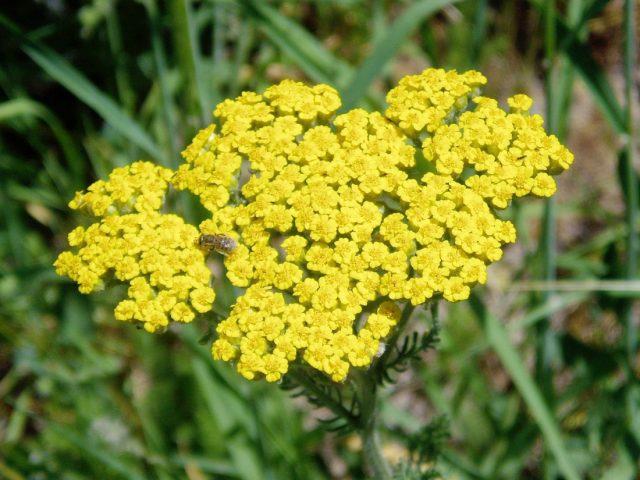
Arabian yarrow tolerates drought well and loves bright light.
Silver
Silver yarrow, or clavenna (Achillea clavenae) is characterized by its short growth. It stretches only up to 20 cm and can act as a ground cover. The leaves of the species are pinnate, finely toothed, the baskets are white, up to 1.8 cm in diameter. The flowers are collected in groups of 3-20 and form free-form panicles.
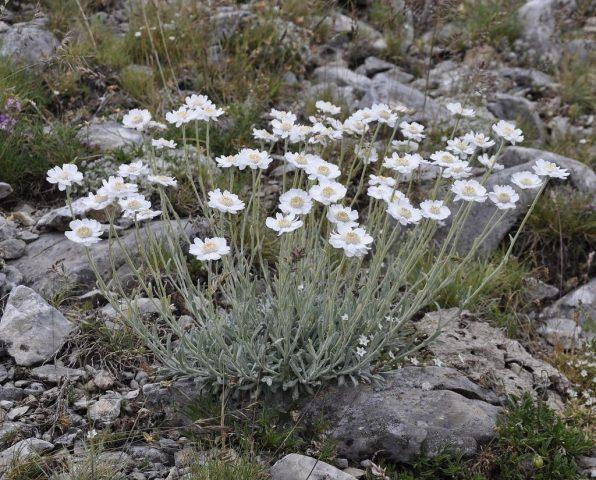
Silver yarrow grows in the Balkans and the Alps
What types of yarrow are there?
Cut grass is represented by numerous species. There are also several classifications of perennials based on flowering times and external features.
By color
The most common types of yarrow found in nature are yellow and white. Often cut grass has a darker core of the baskets and light edge tongues. There are also pink and red species and varieties, although they are less widespread.
In cultivation and in nature you cannot find blue, light blue or purple yarrow. The buds of the plant do not contain the pigment that would give the petals such a color.
By flowering time
Most perennial varieties bloom closer to mid-summer - at the end of June or July. Only some species bloom early and can produce baskets as early as May. The timing also depends on the climatic characteristics of the region. In warm areas, yarrow often blooms a couple of weeks earlier than in the middle zone.
The duration of the decorative period is usually about 45 days. In cold summers, yarrow finishes flowering in 3-4 weeks; in warm weather, it can produce new baskets for up to two months in a row. If you cut off fading buds in a timely manner, you can extend the decorative period.
By height
Types of decorative yarrow can vary greatly in growth. The smallest varieties rise only 15-20 cm above the ground. They are planted in borders and on slopes, and used to decorate rock gardens. Low-growing species are well suited for growing in pots.
Medium-sized plant varieties reach 60-100 cm above the ground. It is customary to place them along facades and fences, as well as between bushes to decorate free space.
Tall species are those that grow up to 1 m or more above the ground. Such varieties are placed in the background of decorative flower beds, and also form individual flower beds from them.
By flower size
In general, individual buds of cut grass are small. The largest ones reach 1 cm in diameter and usually bloom in hybrid varieties.
Most species bear small buds up to only 5 mm in diameter. At the same time, during the decorative period, the perennial still looks spectacular, since the flowers appear on the shoots in large numbers and form wide shields.
The best varieties of yarrow
Not only the species, but also the decorative varieties of yarrow deserve attention. They show the brightest flowering and may have unusual colors.
Red Velvet
The decorative species of common yarrow blooms from June to September. Bears bright dark ruby flowers with a whitish center. Baskets appear on the shoots in large numbers, so the plant looks very impressive and attracts attention. The height of the variety reaches only 50 cm, suitable for planting in flower beds and borders.
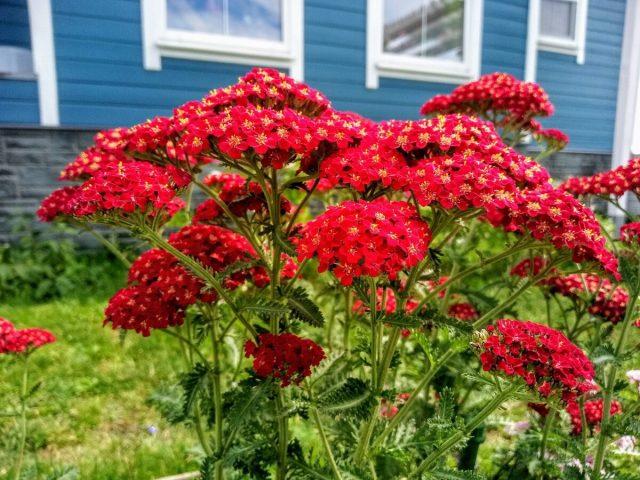
Red Velvet tolerates cold temperatures down to -30 °C well
Cerise Queen
The pink variety of cut grass produces small but very numerous cherry-red heads. It looks impressive in the garden, but over time it may fade a little under the sun. It goes well with blue and purple perennials, white flowers and bluish grasses.
The species is frost-resistant and suitable for cultivation in Eastern Siberia and the Far East. The height reaches an average of 70 cm. It blooms from the beginning of summer, the decorative period lasts until September.
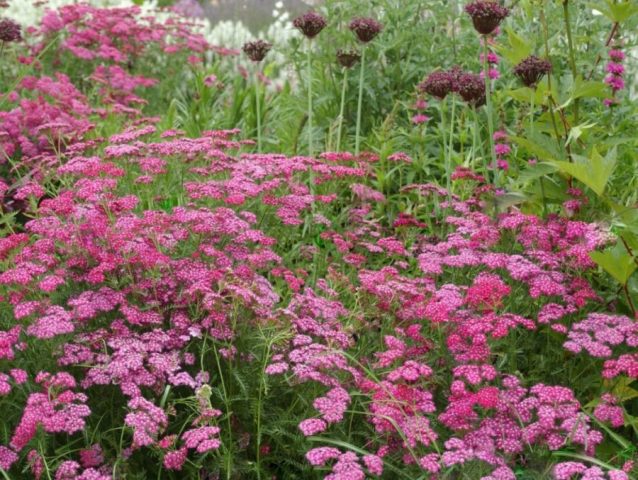
Cerise Queen prefers planting on dry and light poor soils
Paprika
A popular ornamental species produces bright red heads with a yellow center as early as June. Remains attractive for about a month and a half. Winters well in open ground and with minimal shelter tolerates frosts down to -35 °C. With timely pruning of dried inflorescences, it can produce new buds longer than usual until August.
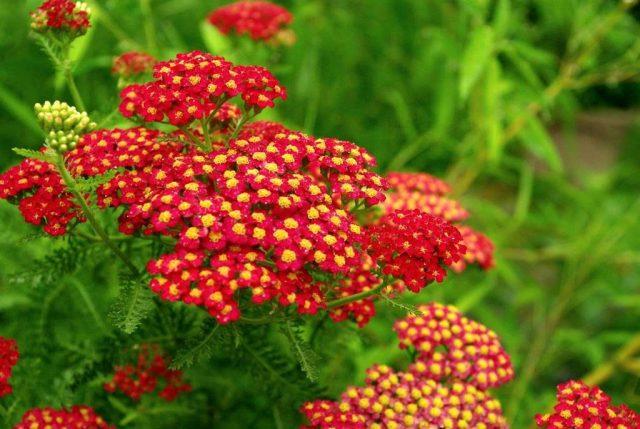
The height of the Paprika variety is about 60 cm
Lilac Beauty
A very beautiful species with lilac flowers is distinguished by a long period of decorativeness. The first buds appear on the shoots in May, and the variety finally fades only in September. Yarrow should be planted on loamy and sandy loam soils; the species loves bright sun. It tolerates dry periods without problems and does not die in cold winters.

The height of the Lilac Beauty variety is about 45 cm
Conclusion
Yarrow looks quite recognizable - its flowers are small, but collected in thick, wide shields. The plant is represented by a large number of species and varieties and is easy to care for. It tolerates poor soils and drought well and rarely suffers from disease.
